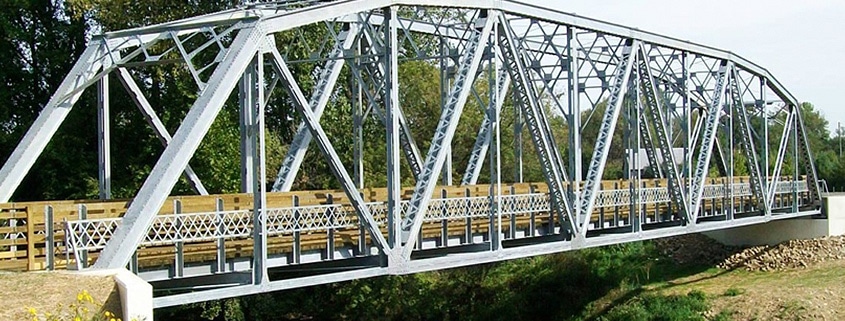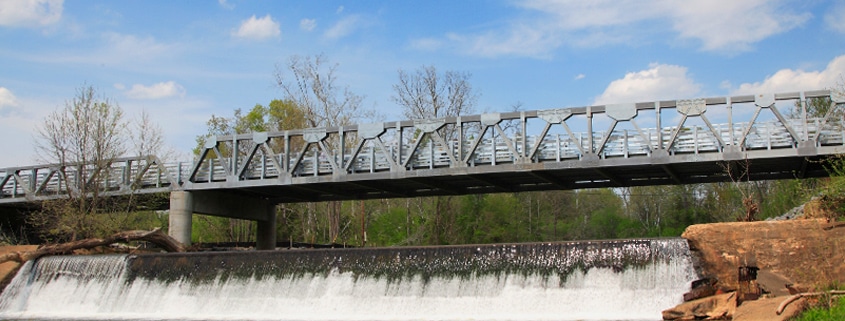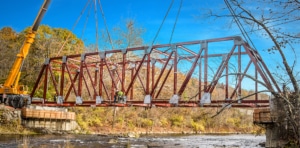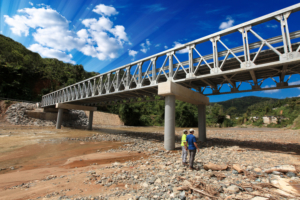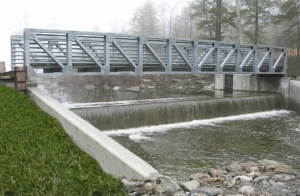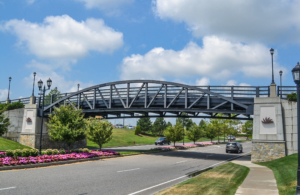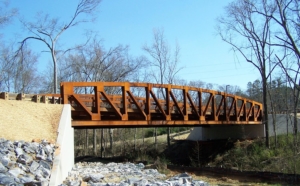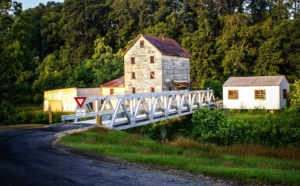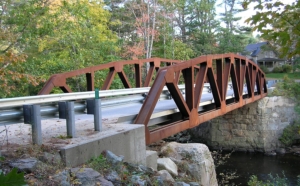Perhaps one of the most impactful bridge designs in use in America are truss bridge designs. With their high weight capacity and various spans, it’s obvious why truss bridge designs are used for important projects such as the famous Golden Gate bridge, which uses a Warren deck truss.
But how did trusses become a staple of America’s most iconic bridge design? And how have they stayed relevant even in the modern-day? Today, we’ll explore the history of truss bridge designs.
The Evolution of a Truss Bridge Designs in America
A truss bridge design constitutes interconnected triangles that distribute the weight over a wider space. This allows the bridge to hold a heavier weight capacity while requiring less material for assembly. These bridges can be made in all shapes and sizes, but are most effective over short and medium spans.
In 1820, Ithiel Town’s lattice truss design became the first patented truss bridge design. It required little metal to build, which made it easy to construct. In the late 18th century, builders all across America began frequently building truss bridges due to their simplistic design. The truss bridge rose in popularity as timber production was easy and appeared limitless. Thus, perhaps the most commonly built bridge of the time was the wooden truss bridge.
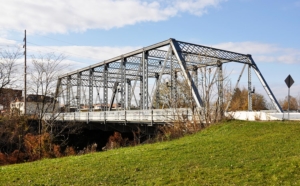
Since its establishment, many continue to build on the truss bridge design in order to improve efficiency. Arguably the three most notorious builders that played an intricate part in the evolution of the truss design were Timothy Palmer, Louis Wernwag, and Theodore Burr.
Howe Truss Design Innovations
The Howe truss, which was licensed in 1840, attracted more builders to the truss design due to its simplicity. The combination of wood and metal in this design enabled the bridge to carry more weight. This was especially appealing during a time when railroads — and the bridges that supported them — were on the rise.
The Howe truss design is significant, as it was eventually designed to be all metal. This truss consists of vertical members that are in tension and diagonal members that are in compression.
Caleb Pratt’s popular Pratt truss design does the opposite of a Howe truss, as diagonals slope toward the center. The Pratt truss was inspired by the Howe truss, and invented four years later. By the early twentieth century, the Pratt truss and its derivations had become the most popular metal truss in the United States.
Modern Truss Bridge Designs
Although the composition of the bridge has evolved, it still keeps the same general design as the original blueprint. These modifications assemble a truss bridge ready and equipped for modern advancements.
Some of these advancements are automated welding, advanced steel fabrication methods, and the affordability of steel. There have also been significant changes to the details of the design, which for U.S. Bridge includes a double bottom cord. The double cord means there’s space for the roadway debris to fall off the bridge, ensuring that the bridge stays in better condition and requires less maintenance.
Modern Truss Bridges in America
Currently, there are many truss bridges in use today as a part of a highway system. This is due to their ability to hold so much weight with lightweight, sustainable steel. In addition, truss bridges the military often uses truss bridges.
Thanks to their design simplicity and use of lightweight steel, truss bridges are excellent contenders for prefabricated bridge construction. Accelerated bridge construction can save builders thousands of dollars and time during the installation phase.
Another benefit of modern truss bridges is their adaptability to your project and location. Truss bridges can be used for short and long-span bridges and are able to withstand extreme weather. The interconnected triangles supports a massive load-bearing capacity with decades of sustainability and minimal upkeep.
U.S. Bridge: 80 years of Building Truss Bridges
With decades of bridge-building experience, we have the knowledge and skills to create beautiful and long-lasting bridge structures for every project. Our bridges are custom-built, manufactured by our team, and delivered according to your specifications and time-frame. We also create virtual 3D models of your bridge for better visualization and accuracy.
Contact us today to learn how we can help bring your bridge to reality. Or use our Bridge Scope tool to get a free estimate of your project just by providing a few specifications.

